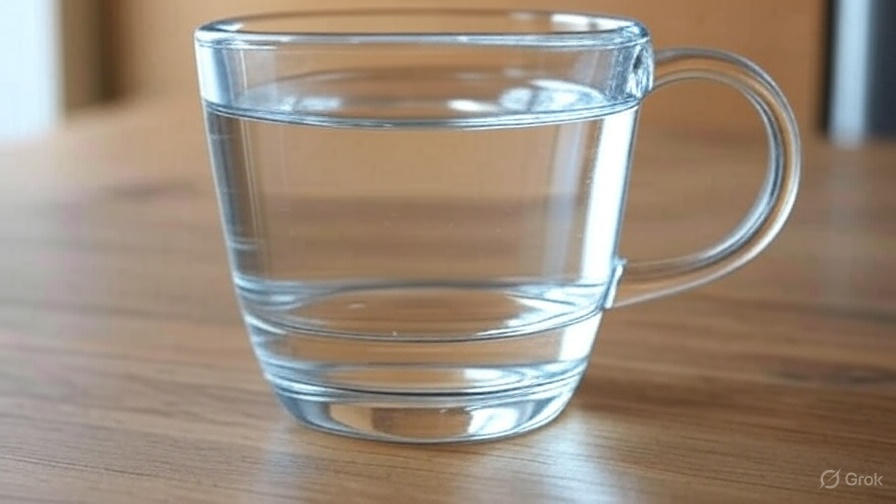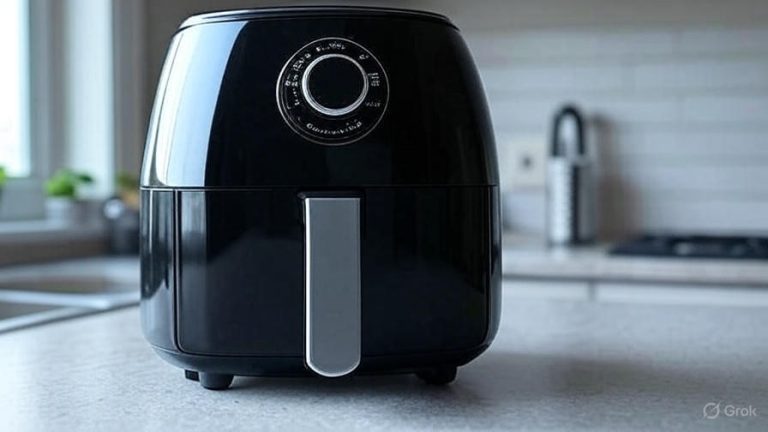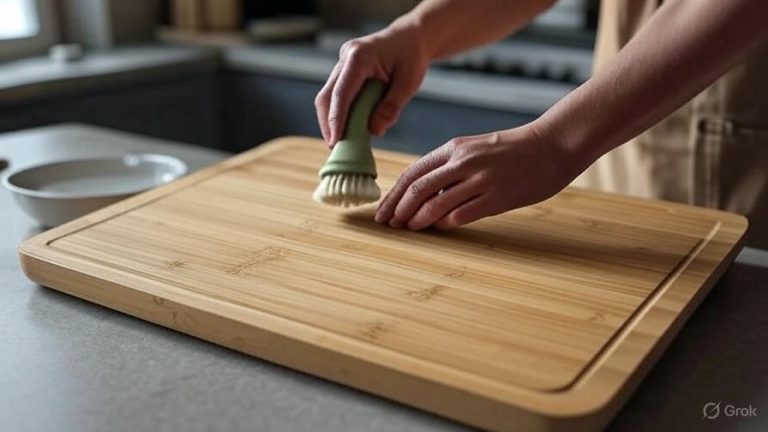How Big is a 20 oz Cup?
You walk into your favorite coffee shop and order a large drink, but have you ever stopped to think about exactly how big that 20 oz cup really is? This seemingly simple question opens up a world of practical knowledge that affects everything from your daily coffee routine to party planning and kitchen organization.
The answer might surprise you. A 20 oz cup holds significantly more liquid than most people realize, and its physical dimensions vary dramatically depending on the cup’s design and intended use. Let’s dive deep into the world of 20 oz cups and explore everything you need to know about their size, capacity, and practical applications.
The Basic Measurements of a 20 oz Cup
A standard 20 oz cup measures approximately 6 to 7 inches in height and 3.5 to 4 inches in diameter at the top. However, these dimensions can fluctuate based on the cup’s shape, material, and manufacturer. The bottom diameter typically ranges from 2.5 to 3 inches, creating the familiar tapered design we see in most disposable cups.
The volume capacity of 20 fluid ounces equals exactly 591.47 milliliters or about 2.5 cups in standard cooking measurements. This makes it larger than a typical coffee mug (which holds 8-12 oz) but smaller than a standard water bottle (which often contains 16.9 oz or 500ml).
When you compare a 20 oz cup to everyday objects, it becomes easier to visualize its true size. The height matches roughly the length of a standard smartphone, while the diameter at the top is similar to a baseball’s width. This mental comparison helps when you’re trying to estimate whether a 20 oz cup will fit in your car’s cup holder or your kitchen cabinet.
Different Types of 20 oz Cups and Their Dimensions
Paper cups designed for hot beverages typically feature a double-wall construction that makes them appear bulkier than their plastic counterparts. These cups often measure closer to 6.5 inches in height due to the extra insulation layer. The rim diameter stays consistent at around 3.5 inches, but the overall circumference increases because of the additional material.
Plastic cups, on the other hand, tend to be slightly taller and narrower. A typical 20 oz plastic cup reaches about 7 inches in height with a diameter of 3.25 inches at the top. The thinner walls allow for more liquid capacity without increasing the external dimensions significantly.
Glass and ceramic 20 oz cups present unique sizing challenges. These materials require thicker walls for durability, which means the external dimensions are larger while maintaining the same internal volume. A ceramic 20 oz mug might measure 4.5 inches in diameter and 5.5 inches in height, appearing shorter and wider than disposable alternatives.
Stainless steel tumblers have gained popularity for their temperature retention properties. A 20 oz stainless steel tumbler typically measures 7.5 inches in height and 3.5 inches in diameter, with the extra height accommodating the vacuum insulation technology.
How 20 oz Compares to Other Common Cup Sizes
The coffee industry has created its own sizing standards that often confuse consumers. A “tall” at most coffee chains holds 12 oz, while a “grande” contains 16 oz. The 20 oz size falls into the “venti” category, though some chains offer 24 oz as their largest size.
Fast food restaurants typically offer 20 oz as their medium or large size option. This puts it right in the middle of most beverage size ranges, making it a popular choice for consumers who want more than a small drink but don’t need the largest option available.
Sports drinks commonly come in 20 oz bottles, making this size familiar to athletes and fitness enthusiasts. The size provides enough hydration for most workout sessions without being so large that it becomes cumbersome to carry.
Energy drinks often use 16 oz as their standard size, making a 20 oz cup 25% larger than these popular beverages. This extra capacity becomes important when you’re mixing drinks or adding ice, which can significantly reduce the actual liquid volume.
Practical Applications and Uses
Coffee enthusiasts often debate the ideal cup size for different brewing methods. A 20 oz cup works perfectly for cold brew coffee, which people typically consume in larger quantities due to its smoother, less acidic taste. The size also suits iced coffee drinks, where ice takes up significant space in the cup.
For hot beverages, 20 oz might seem excessive, but it’s perfect for people who prefer to drink their coffee slowly throughout the morning. The larger size means fewer refills and maintains the drink’s temperature longer in insulated cups.
Party planners find 20 oz cups ideal for outdoor events and casual gatherings. The size accommodates mixed drinks, punch, and other party beverages while being large enough to reduce the frequency of refills. Guests appreciate not having to return to the drink station as often.
Office environments benefit from 20 oz cups for water consumption. Health experts recommend drinking 64 oz of water daily, and a 20 oz cup makes it easy to track intake – you just need to fill it 3.2 times throughout the day.
The Science Behind Cup Sizing
Manufacturers design cup sizes based on consumer behavior studies and ergonomic research. The 20 oz size hits a sweet spot where the cup remains comfortable to hold while providing substantial liquid capacity. The diameter at the top allows for easy sipping without being so wide that it becomes awkward.
The tapered design of most 20 oz cups serves multiple purposes. It creates a more comfortable grip, allows cups to stack efficiently for storage, and provides structural integrity. The narrower bottom also fits better in standard cup holders, which are typically designed for 3-inch diameter bases.
Temperature retention becomes crucial for larger cups. The increased surface area of a 20 oz cup means more heat loss for hot beverages and faster warming for cold drinks. This is why many 20 oz cups feature double-wall construction or insulation technology.
The weight distribution of a full 20 oz cup requires careful design consideration. Twenty fluid ounces of liquid weighs approximately 1.25 pounds, plus the weight of the cup itself. Manufacturers must balance durability with comfort, ensuring the cup doesn’t become too heavy when full.
Material Considerations and Their Impact on Size
Paper cups rely on thickness and coating for insulation and leak prevention. A 20 oz paper cup typically uses 16-20 oz paper stock, with additional polyethylene coating. This construction affects the internal volume, as the walls are thicker than other materials.
Plastic cups can achieve thinner walls while maintaining strength, allowing for maximum internal volume within the external dimensions. However, different plastic types expand at different rates when filled with hot liquids, which manufacturers must account for in their sizing.
Ceramic and glass cups require the thickest walls for durability, significantly impacting the size-to-volume ratio. A ceramic 20 oz mug might have external dimensions similar to a 24 oz plastic cup due to the material requirements.
Metal cups, particularly stainless steel, offer excellent durability with moderate wall thickness. The thermal properties of metal require specific design considerations to prevent the cup from becoming too hot or cold to hold comfortably.
Regional and Cultural Variations
American cup sizes tend to be larger than their international counterparts. A 20 oz cup in the United States might be considered extra-large in many European countries, where standard beverage sizes are typically smaller.
Asian markets often prefer smaller, more frequent servings, making 20 oz cups less common in traditional settings. However, Western influence has introduced larger sizes in urban areas and international chains.
Coffee culture varies significantly worldwide, affecting cup size preferences. Italian espresso culture favors small, concentrated servings, while American coffee culture embraces larger portions. The 20 oz size reflects the American preference for substantial beverage servings.
Climate also influences cup size preferences. Warmer regions tend to favor larger cold beverage containers, while colder climates might prefer smaller hot beverage cups that can be consumed before cooling.
Environmental and Economic Factors
The environmental impact of 20 oz cups varies dramatically by material. Paper cups, while biodegradable, often contain plastic linings that complicate recycling. Plastic cups can be recycled but may not be accepted by all recycling programs.
Reusable 20 oz cups offer the best environmental value, particularly for regular beverage consumers. The initial cost is higher, but the long-term savings and environmental benefits make them attractive options for conscious consumers.
Manufacturing costs influence the availability and pricing of different 20 oz cup options. Paper cups are generally cheapest to produce, while high-quality insulated stainless steel cups command premium prices.
Shipping and storage costs also factor into cup design. Stackable 20 oz cups reduce transportation costs and storage requirements, making them more economical for businesses and consumers.
Tips for Choosing the Right 20 oz Cup
Consider your primary use when selecting a 20 oz cup. Cold beverages benefit from wider openings and thinner walls, while hot drinks require insulation and comfortable handling surfaces. The lid compatibility also matters – some cups work better with specific lid styles.
Handle design becomes important for 20 oz cups due to their size and weight when full. Look for ergonomic handles that distribute weight evenly and provide a secure grip. Some people prefer handle-free designs that are easier to store and clean.
Durability requirements vary by intended use. Daily office use demands different durability than occasional party use. Consider the trade-offs between weight, durability, and cost when making your selection.
Maintenance requirements differ by material. Paper cups are disposable but create waste. Plastic cups are easy to clean but may retain flavors. Glass and ceramic cups require careful handling but offer the purest taste experience.
The Future of 20 oz Cup Design
Sustainable materials are driving innovation in cup design. Manufacturers are developing biodegradable plastics, plant-based materials, and improved recycling processes to reduce environmental impact while maintaining the functionality of traditional 20 oz cups.
Smart technology integration is emerging in premium cup designs. Temperature-indicating materials, leak-proof smart lids, and even cups that track liquid intake are becoming available for tech-savvy consumers.
Customization options are expanding as manufacturing technology improves. Personal-sized adjustments, custom colors, and personalized designs are becoming more accessible and affordable for individual consumers.
Health-conscious design features are gaining popularity. Antimicrobial coatings, BPA-free materials, and designs that encourage proper hydration are becoming standard features in premium 20 oz cups.
Making the Most of Your 20 oz Cup
Proper filling techniques maximize the utility of a 20 oz cup. Leave about an inch of space at the top for hot beverages to prevent spills and allow for thermal expansion. Cold beverages can be filled closer to the rim, but account for ice displacement.
Temperature management becomes crucial with larger cups. Pre-warming or pre-cooling your cup can help maintain your beverage’s desired temperature longer. Insulated cups perform better, but simple techniques like using coasters or sleeves can help with non-insulated options.
Cleaning and maintenance ensure your 20 oz cup remains functional and hygienic. Hand washing is often recommended for insulated cups, while dishwasher-safe options offer convenience for busy lifestyles.
Storage solutions for 20 oz cups require more space than smaller alternatives. Consider stackable designs if you need multiple cups, and ensure your cabinet space can accommodate the height and diameter of your chosen cups.
The 20 oz cup represents more than just a beverage container – it’s a perfect example of how design, function, and consumer needs intersect in everyday objects. Whether you’re sipping your morning coffee, staying hydrated during a workout, or hosting a party, knowing the true size and capabilities of a 20 oz cup helps you make better choices for your specific needs.
From its 6-7 inch height to its 3.5-4 inch diameter, the 20 oz cup strikes a balance between capacity and practicality that has made it a staple in coffee shops, offices, and homes around the world. As materials and design continue to evolve, the fundamental appeal of this versatile size remains constant – it’s big enough to satisfy without being overwhelming, practical enough for daily use, and familiar enough to feel just right in your hands.







